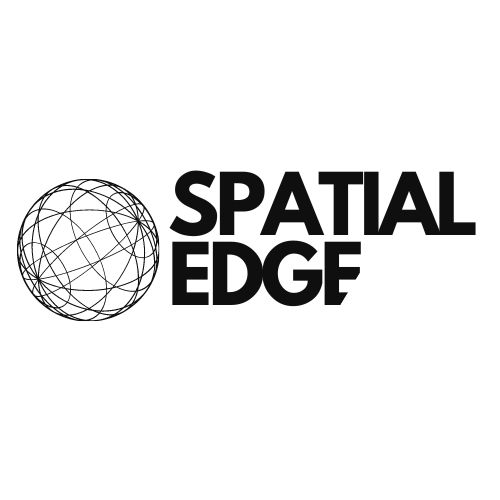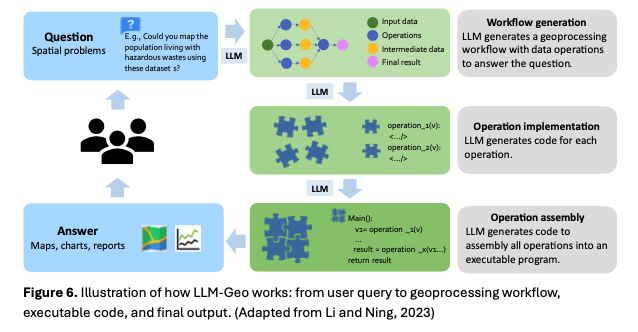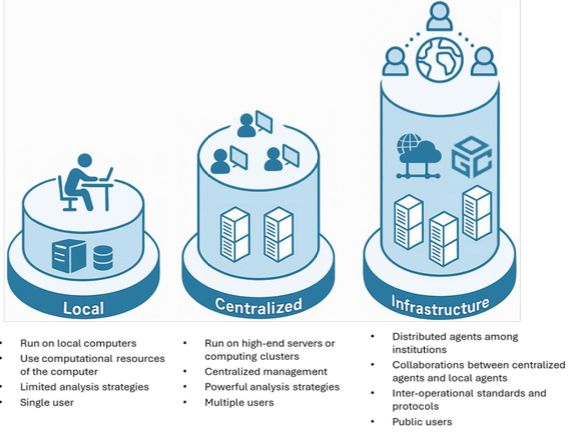
Newsletter: http://spatialedge.co
Subscribe to the Spatial Edge newsletter: yohan.so

Subscribe to the Spatial Edge newsletter: yohan.so
1. nightlights can capture certain elements of consumption and production
2. the level of granularity when using nightlights really matters
1. nightlights can capture certain elements of consumption and production
2. the level of granularity when using nightlights really matters
The more you zoom in, the bigger these spatial mismatches between daytime and nighttime economic activity become.
The more you zoom in, the bigger these spatial mismatches between daytime and nighttime economic activity become.
• these areas generate a lot more economic activity (e.g. financial districts), compared to
• areas bustling with bars and restaurants
These nightlife areas tend to be overestimated in nightlights data.
• these areas generate a lot more economic activity (e.g. financial districts), compared to
• areas bustling with bars and restaurants
These nightlife areas tend to be overestimated in nightlights data.
• work during the day in one 500m2 pixel and
• spend money in a different pixel at night.
This implies that pixels with higher daytime economic activity will be systematically underrepresented in nightlights data.
• work during the day in one 500m2 pixel and
• spend money in a different pixel at night.
This implies that pixels with higher daytime economic activity will be systematically underrepresented in nightlights data.
With nightlights we can zoom into areas as small as 500m2.
With nightlights we can zoom into areas as small as 500m2.
However, the places where I spend money at night in Essex, like restaurants, do light up and are visible from space.
However, the places where I spend money at night in Essex, like restaurants, do light up and are visible from space.
Imagine I work in London but live in Essex, an hour away.
My work (i.e. production) contributes to London's economy.
But when I spend time in Essex, like eating out at night, that's where my consumption mainly happens.
Imagine I work in London but live in Essex, an hour away.
My work (i.e. production) contributes to London's economy.
But when I spend time in Essex, like eating out at night, that's where my consumption mainly happens.
Nightlights can capture certain elements of consumption AND production.
So when doing an analysis using nightlights, we need to know the composition of production and consumption.
This is important to avoid double counting.
Nightlights can capture certain elements of consumption AND production.
So when doing an analysis using nightlights, we need to know the composition of production and consumption.
This is important to avoid double counting.
Here we see:
1. lights generated from mines being lit up at night (i.e. production-based economic activity), AND
2. lights generated by mining staff who are eating out at night (e.g. consumption-based economic activity).

Here we see:
1. lights generated from mines being lit up at night (i.e. production-based economic activity), AND
2. lights generated by mining staff who are eating out at night (e.g. consumption-based economic activity).
Nightlights can capture some production-related activities.
E.g. nighttime construction and nighttime mining.
Nightlights can capture some production-related activities.
E.g. nighttime construction and nighttime mining.
E.g. combining production values with income and consumption figures without accounting for overlaps could distort things.
Henderson et al., essentially view nightlights as a measure of nighttime consumption:

E.g. combining production values with income and consumption figures without accounting for overlaps could distort things.
Henderson et al., essentially view nightlights as a measure of nighttime consumption:
1. Adding up all of the consumption in an economy
2. Adding up all of the income earned in an economy
3. Adding up the value of all things produced in an economy
For an entire country, these should equal one another.
1. Adding up all of the consumption in an economy
2. Adding up all of the income earned in an economy
3. Adding up the value of all things produced in an economy
For an entire country, these should equal one another.
It’s vague to say nightlights capture ‘economic activity’.
What 𝙚𝙭𝙖𝙘𝙩𝙡𝙮 do we mean by economic activity?
The most popular paper on nightlights and economic activity is Henderson et al. (2012).
It uses nightlights as a proxy for real GDP growth.

It’s vague to say nightlights capture ‘economic activity’.
What 𝙚𝙭𝙖𝙘𝙩𝙡𝙮 do we mean by economic activity?
The most popular paper on nightlights and economic activity is Henderson et al. (2012).
It uses nightlights as a proxy for real GDP growth.
Subscribe to the Spatial Edge newsletter: yohan.so

Subscribe to the Spatial Edge newsletter: yohan.so
At the end of the day, autonomous GIS could make spatial analysis:
• More accessible to non-experts.
• Faster and more scalable.
• Capable of generating new insights.
It also forces GIScience to rethink education, ethics, and what it means to “know” geography
At the end of the day, autonomous GIS could make spatial analysis:
• More accessible to non-experts.
• Faster and more scalable.
• Capable of generating new insights.
It also forces GIScience to rethink education, ethics, and what it means to “know” geography
• Trust and ethics: Who is responsible if a model makes a bad call? How do we ensure fairness?
• Trust and ethics: Who is responsible if a model makes a bad call? How do we ensure fairness?
• LLMs lack of GIS-specific knowledge (e.g., projections, spatial joins).
• Skills gap: LLMs don’t always know what tools to use or how to handle large files.
• Continuous learning: Most models can’t improve themselves after deployment.
• LLMs lack of GIS-specific knowledge (e.g., projections, spatial joins).
• Skills gap: LLMs don’t always know what tools to use or how to handle large files.
• Continuous learning: Most models can’t improve themselves after deployment.
• 𝗚𝗜𝗦 𝗖𝗼𝗽𝗶𝗹𝗼𝘁: Helps QGIS users do analysis more efficiently.

• 𝗚𝗜𝗦 𝗖𝗼𝗽𝗶𝗹𝗼𝘁: Helps QGIS users do analysis more efficiently.
The authors provide working examples:
• 𝗟𝗟𝗠-𝗙𝗶𝗻𝗱: Automatically finds and downloads the right geospatial data.
• 𝗟𝗟𝗠-𝗚𝗲𝗼: Runs a complete spatial analysis—e.g., walkability around schools—by creating code and visualizing results.
The authors provide working examples:
• 𝗟𝗟𝗠-𝗙𝗶𝗻𝗱: Automatically finds and downloads the right geospatial data.
• 𝗟𝗟𝗠-𝗚𝗲𝗼: Runs a complete spatial analysis—e.g., walkability around schools—by creating code and visualizing results.
There are three technical scales:
1. Local: Runs on a single machine
2. Centralized: Uses cloud computing to handle larger tasks.
3. Infrastructure-scale: Distributed systems for massive analysis, possibly run by governments or research institutions.

There are three technical scales:
1. Local: Runs on a single machine
2. Centralized: Uses cloud computing to handle larger tasks.
3. Infrastructure-scale: Distributed systems for massive analysis, possibly run by governments or research institutions.
The core of an autonomous GIS is the “decision core”. This is typically an LLM that:
• Reads your question.
• Plans a solution.
• Finds and cleans the data.
• Runs the analysis (e.g., in Python or GIS software).
• Presents results (maps, stats, reports).
The core of an autonomous GIS is the “decision core”. This is typically an LLM that:
• Reads your question.
• Plans a solution.
• Finds and cleans the data.
• Runs the analysis (e.g., in Python or GIS software).
• Presents results (maps, stats, reports).
I.e. they can follow instructions, create workflows, and run them, but need help getting the right data or interpreting results.
I.e. they can follow instructions, create workflows, and run them, but need help getting the right data or interpreting results.

